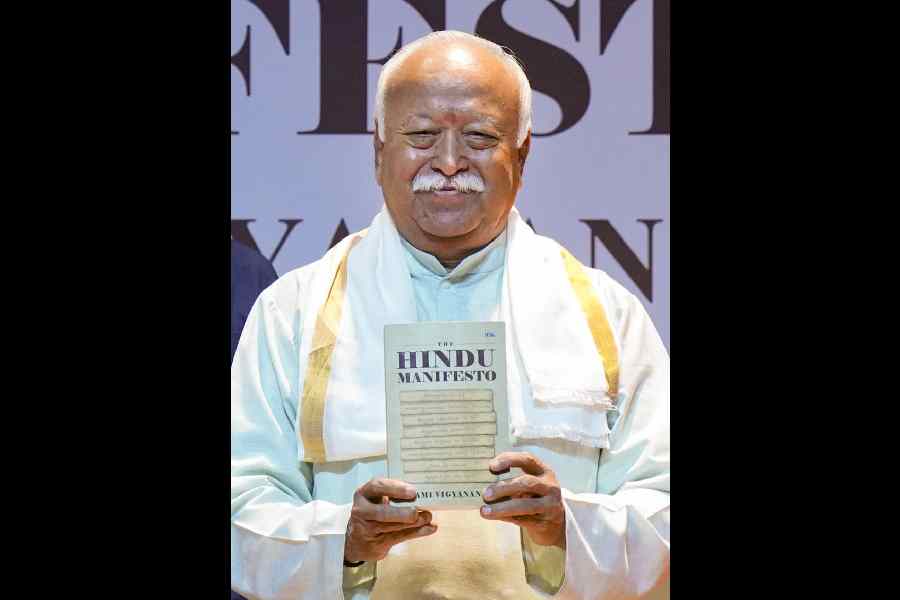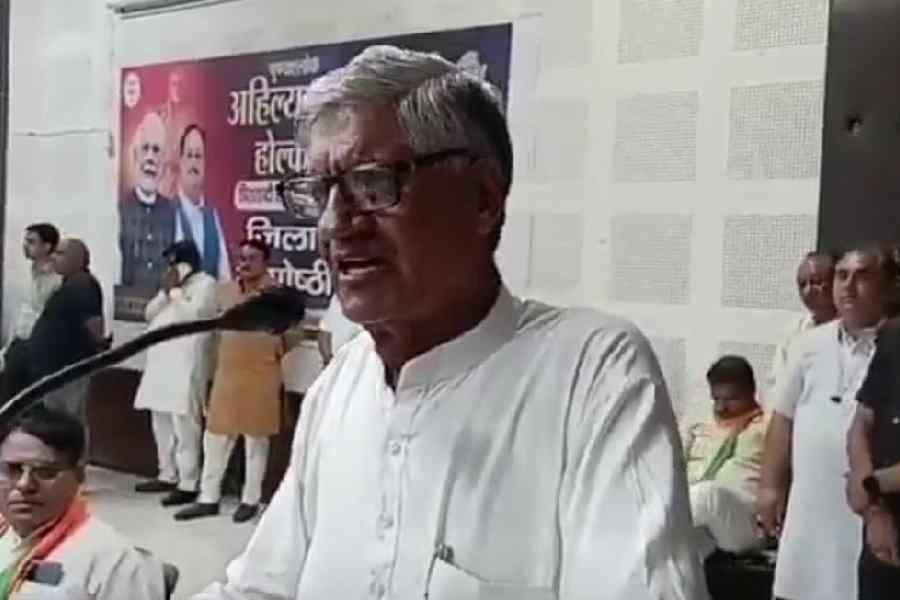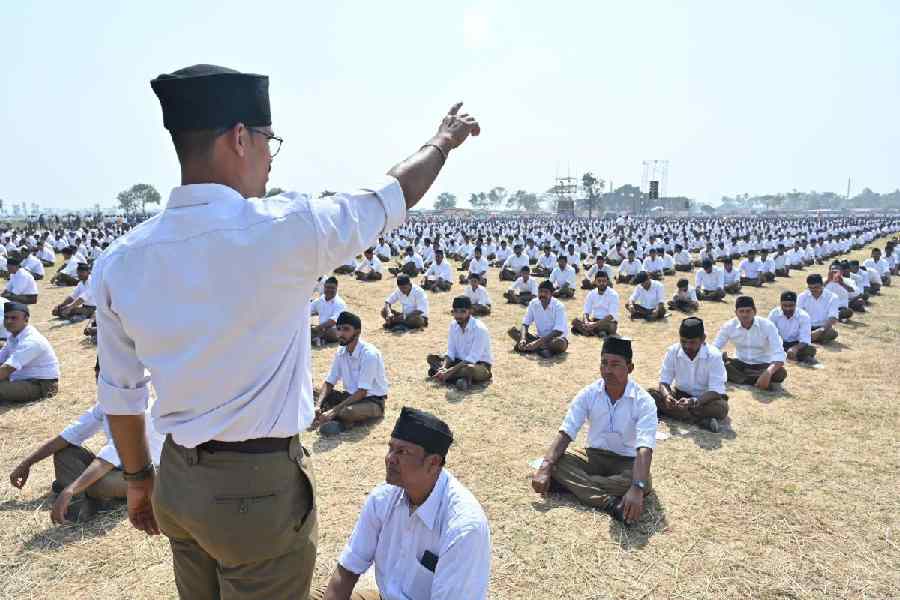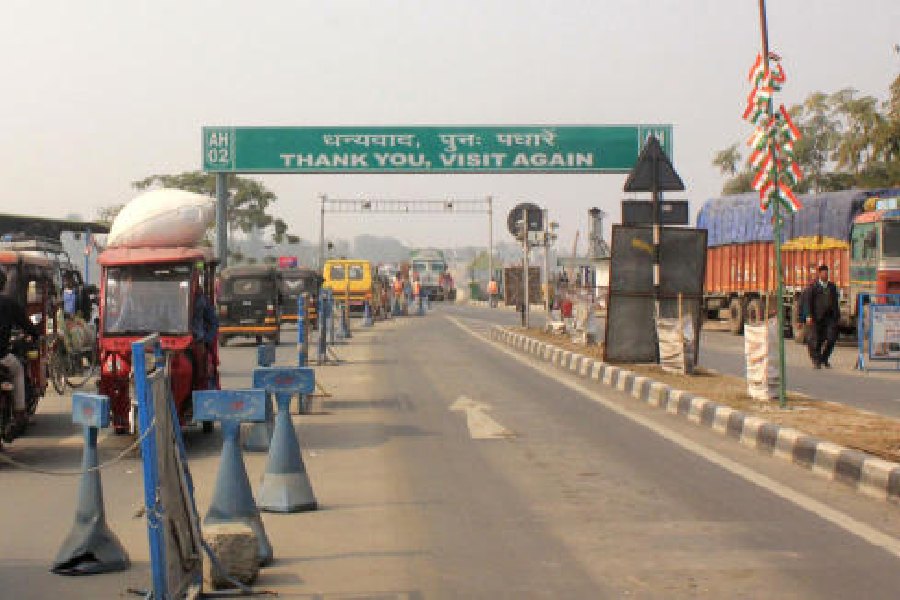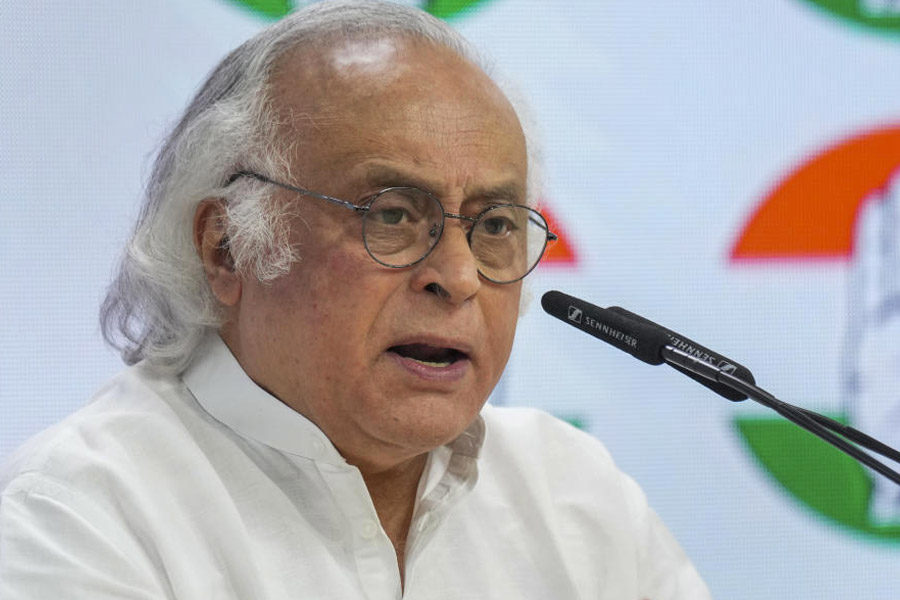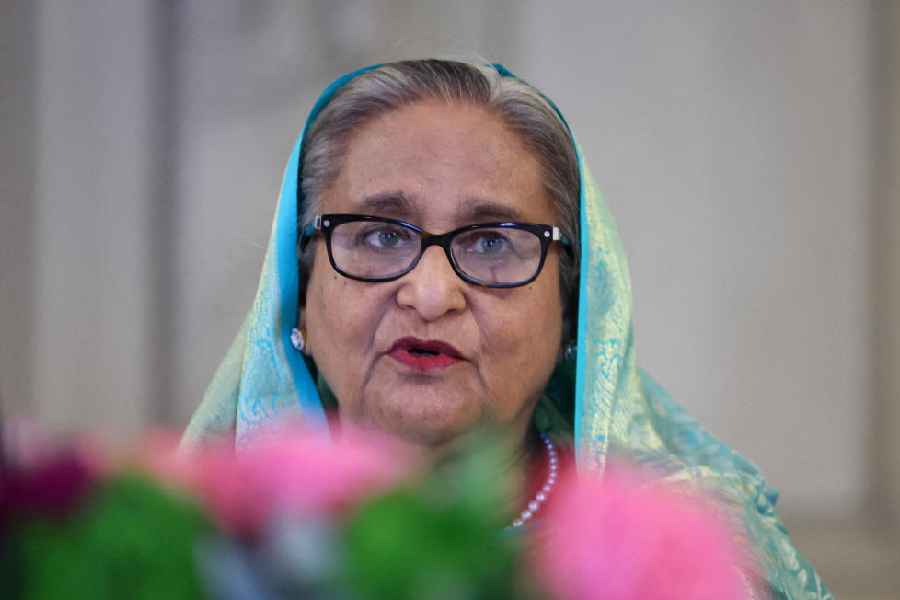 |
| Lakshmania village resident Basanti Soren returns home with firewood. Picture by Amit Kumar |
Bisun Murmu is barely 14 and has to ensure that his grandparents have a fistful of rice for dinner. And when he feels hungry after grazing cattle from dawn to dusk, he gulps down a glass or two handia.
“Handia (rice beer) is the best option to keep hunger away,” said Bisun, a resident of Rupabel village in Jamui’s Khaira block.
The school dropout was compelled to take up the job of a charvaha (shepherd) after his parents passed away last year. His daily earning — a fistful of rice — after grazing cattle can make up a single meal for his grandparents.
Bisun is not alone. Abject poverty and alleged non-implementation of government employment schemes in Maoist-hit Munger, Lakhisarai, Jamui and Banka districts have forced tribal children and teenagers take to handia (rice beer) to combat hunger.
This correspondent came across a girl collecting firewood on the foothills of Sringi Rishi in Lakhisarai district. Asked why she was not in school, Basanti Soren (13) replied she never got the chance to attend one. Prodded, the plucky teenager, eldest among four siblings, from Lakshmania village in Surajgarha block, revealed that she earns barely Rs 20-25 by selling firewood. “My earnings hardly suffice my family of five. When my four-year-old sister cries in hunger, I give her handia to put her to sleep. Handia helps us counter hunger and pain,” she said. “I often come across men-in-uniform (Maoists) who offer me food but I decline,” Basanti added. Basanti’s father left home two years back in search of job never to return.
Like Bisun or Basanti, hundreds of tribal children and even their parents find hadia the only way to combat hunger in the hill ranges spread across Munger, Lakhisarai, Jamui and Banka districts.
Suresh Sharan, a doctor at Lakhisarai sadar hospital, said: “Regular consumption of hadia by any child or adolescent can lead to stomach ulcer and liver damage.”
A Jhajha (Jamui)-based doctor said liver-related diseases were common among children in the district’s remote tribal areas.
While senior administrative officers of Jamui and Lakhisarai districts were not available for comment, a junior officer at Jamui, preferring anonymity, said: “Government reports show that over 65.69 per cent children in tribal areas of Bihar and Jharkhand suffer from malnourishment. We must formulate policies to solve the issue. It is only possible when government-sponsored welfare schemes are implemented in such remote areas.”
Kishore Jaiswal, a Munger-based social worker said: “The Maoists collect levy from the mining and other forest product industries in this region.”
Citing a February 2010 judgment of the Supreme Court bench of justices Sudarshan Reddy and S. Singh Nijjar in a case related to Chhattisgarh, Abdesh Kumar, a senior lawyer of Munger Bar Association, said the court told the concerned government to implement various welfare projects in tribal areas to counter the growth of Naxalism. “The court pointed out that Naxalism is not a political problem, rather a problem related to development. The court urged the government to find an amicable solution. The option should be to bring them back to the mainstream by ensuring development in the region,” he added.


